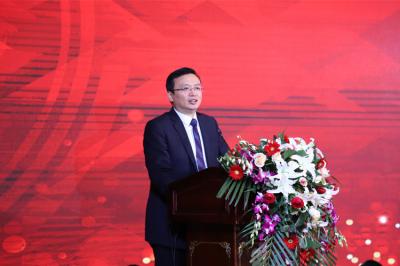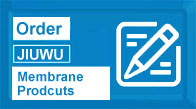Organic Membrane and inorganic membrane (mainly ceramic membrane) are the main types of filter elements used in water purification equipment, each having distinct characteristics and applicable ranges.
Organic Membrane is usually made from high molecular polymers (such as polysulfone, polyacrylonitrile, polyethersulfone, etc.), offering good flexibility and film-forming properties. It can be formed into various shapes like hollow fiber, flat sheet, or spiral-wound configurations.
Ceramic membranes are primarily made through high-temperature sintering of inorganic materials such as alumina, zirconia, titania, silicon carbide, etc. They are hard and dense in structure, commonly available in tubular, sheet, and multi-channel forms.
Organic Membrane has a wide range of pore sizes, capable of achieving separation at micron to nanometer levels. It is suitable for various filtration needs such as desalination, bacteria removal, and organic matter retention. Its hydrophilicity generally aids in enhancing water flux.
Ceramic membranes have extremely high mechanical strength and thermal stability. They feature precise pore sizes, capable of achieving sub-micron to nanometer levels, and efficiently retain bacteria, viruses, particles, colloids, and specific ions. They are used for high-precision separations such as ultrafiltration and nanofiltration.
Organic Membrane has relatively poor tolerance to environmental factors such as pH, temperature, oxidants, and solvents. Long-term exposure to extreme conditions may cause swelling, shrinking, degradation, and other issues, impacting membrane performance and service life.
Ceramic membranes boast excellent chemical and thermal stability, able to withstand a wide pH range, high temperatures, strong acids and bases, oxidants, and organic solvents. They are resistant to corrosion and degradation, making them particularly suitable for treating water with complex chemical components, high concentrations of pollutants, or requiring high-temperature sterilization.
Organic Membrane is susceptible to fouling by organic matter, microorganisms, and inorganic scales, leading to flux decline. While chemical cleaning and physical flushing can restore some flux, prolonged use may eventually necessitate replacement.
Ceramic membranes, with their high surface smoothness and ordered pore structure, exhibit low adsorption to pollutants and strong anti-fouling performance. Even if fouling occurs, their robust chemical resistance allows for more aggressive cleaning methods (e.g., high temperature, strong acids and bases) to effectively regenerate and restore flux, significantly extending their service life.
Organic Membrane generally has a lower upfront purchase cost, but due to their shorter lifespan, susceptibility to fouling, and the need for regular replacement, the long-term maintenance and total ownership costs can be higher.
Ceramic membranes require a larger initial investment, but due to their long lifespan, low failure rate, and ease of cleaning and regeneration, the operational maintenance costs are reduced. The lifecycle cost (LCC) is more advantageous, particularly when treating complex or harsh water conditions.




 +86-25-58849045
+86-25-58849045
 +86-25-58749295
+86-25-58749295
 jiuwu@jiuwu.com
jiuwu@jiuwu.com
 No. 9 Park Road, Pukou District, Nanjing City (Sanqiao Factory)
No. 9 Park Road, Pukou District, Nanjing City (Sanqiao Factory) Call us on:
Call us on:  Email Us:
Email Us:  No. 9 Park Road, Pukou District, Nanjing City (Sanqiao Factory)
No. 9 Park Road, Pukou District, Nanjing City (Sanqiao Factory)

 English
English 한국어
한국어 français
français русский
русский Español
Español
